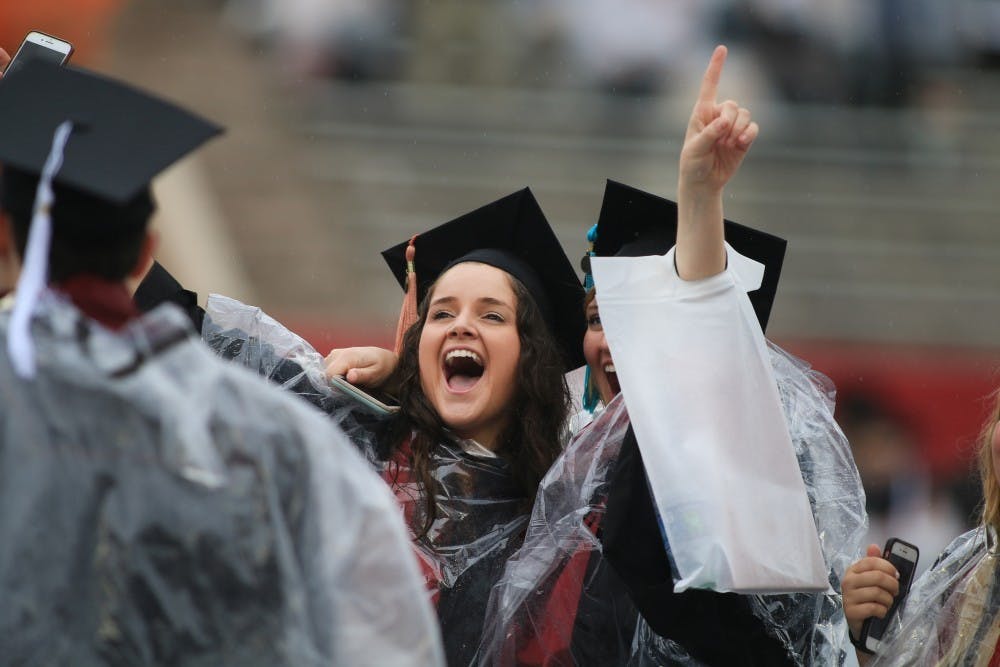A new state-wide report released July 11 shows the rate of Indiana college students graduating on time is increasing.
“At public institutions, 40.6 percent of all Indiana college students graduate on-time,” the report by the Indiana Commission for Higher Education reads. “Nearly two-thirds of all students complete college within six years.”
This increase is a welcome one as graduation rates have been stagnant over the past few years, said Victor Borden, an IU professor of higher education and student affairsin the School of Education. He said part of the change can be attributed to college participation of high school graduates.
“There are higher graduation rates as more higher-achieving students come in, but more lower-achieving students are coming to college at the same time, so it balances out,” Borden said.
Over the last 20 years, the national college participation rate has jumped from 40% to 70%, Borden said. This is because most jobs created now and in the future require a college degree.
With this increase, institutions are taking steps to ensure students will be able to complete their degree on time, so they are not left with a mountain of debt and no college credentials, Borden said.
“Students are bearing a higher portion of costs than ever before,” Borden said. “It’s getting to the point to where depending on what you major in, you might not be able to pay it off if you don’t graduate.”
But he said policy makers and institutions are becoming more accountable when dealing with student debt. Students who don't finish college are more likely to default on their student loans, according to Inside Higher Ed. Institutions face federal sanctions if they have a high loan default rate among their students.
“Lot’s of things going on in the policy end,” Borden said. “They are making it more attractive to take a full load of credits.”
One of the ways schools are doing this is expanding banded tuition, which means students pay the same amount of tuition for 12-18 credits. IU expanded banded tuition to all of its campuses across the state in the fall 2016 semester.
According to the Affordability @ IU website, 7 in 10 students at public universities that charge banded tuition take 15 credit hours per semester compared to 2 in 10 at institutions that charge by the credit hour.
Other strategies for increasing graduation rates include encouraging students to take college courses in high school and passing policies that make those classes easily transferable to public colleges.
Teachers and faculty are changing the rhetoric around education, making students more aware that completing school on time is more beneficial for them and their career, Borden said.
“Thirty or 40 years ago, faculty didn’t think about career,” Borden said. “Their focus was on education not employability.”
The report includes information on minority students, socioeconomic status and student age and the considerable achievement gap between them and their peers on likeliness of graduating on time.
The Indiana Commission for Higher Education is releasing the annual Equity Report later this summer, which provides information about Indiana’s underserved student population. It is planning to close the achievement gap by 2025, said Charlee Beasor, the communications director for the Indiana Commission for Higher Education.
“By offering an array of financial aid options to students, Indiana is making significant progress in closing the achievement gap for low-income and minority students,” Beasor said in an email.
The Neal-Marshall Black Culture Center at IU focuses on black student retention at IU by offering programs to support students, such as a freshman leadership academy to help students get acclimated to college and social programs throughout the year, said Gloria Howell, associate director for the center.
Beasor said 21st Century Scholars, a college readiness and scholarship program, are on its way to close that gap by 2025. The commission is encouraging campuses to innovate ways to provide access to all underserved populations, whether that be students with disabilities or veteran students.
“We encourage Indiana’s campuses to innovate ways to ensure all students at our public colleges and universities have access to the opportunity a quality credential provides,” Beasor said.




